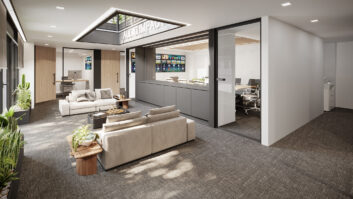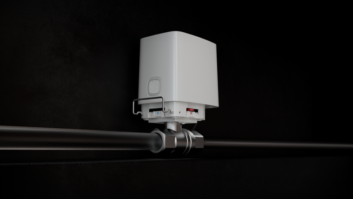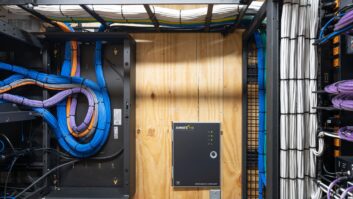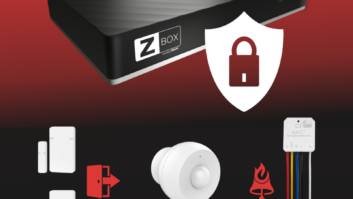At the end of next month, the countdown begins. In 365 days, analog television will be a thing of the past… or will it?
Regardless, the certainty of a hard, rather than variable, date for the shut down of analog television broadcasting in the U.S. means that things will being to be set in motion that you need to begin to prepare for now.
Anyone who has followed the digital television transition will know that each broadcaster has been given a second, digital channel, in addition to their original analog channel. The purpose of this exercise was to provide a phase-in period whereby consumers will have access to both analog and digital broadcasts. The concept was that as consumers gradually replaced their current analog sets with newer, digital ones the point would eventually be reached when enough people were watching the digital channels so that it wouldnt be a big burden to take back the analog channels. Some of this newly available spectrum space, in turn, would be turned over for public safety applications with the rest being auctioned off to land mobile phones, cellular phones, and other commercial users in an effort to bring in revenue to balance the federal budget. Indeed, the piece of legislation that set what is still the current turn-off date was not a bill dealing with HDTV or television in general, but rather a budget bill.
On its face, that bill set the original shutoff date at December 31, 2006, but there was also a rather major caveat in the bill that only allowed the shut-off when 85 percent or more of the homes in a market are capable of receiving a digital signal. Because the sales of digital displays with built-in tuners and/or cable set tops or satellite boxes with digital tuning capability has been slow, almost everyone associated with any part of consumer electronics or broadcasting has long realized that the 2006 date was going to end up being a fantasy. However, rather than let the time simply pass while the number of DTV-capable households builds up to the required number for the shut-off, Congress has decided to reset the deadline.
Three factors seem to be driving the revived efforts to recapture the analog spectrum and move to digital- only broadcasts. The first factor is an increased federal deficit, something that would be eased to some extent by the close to $5 billion (or more) that is hoped to find its way into the treasury by selling the returned TV channels to wireless companies. Next, the post 9/11 pressures to increase the number of radio frequencies available to public safety agencies and first responders has been a factor in trying to push the broadcasters off the spectrum that they now occupy. The need for increased and improved emergency services communication for has been made all the more visible in the past few months in the aftermath of Hurricanes Katrina and Rita.
Last, but certainly not least, politicians are, well, political beings. Getting increasing heat from constituents about a giveaway of valuable spectrum space to broadcasters is something that they would just rather do without. Thus, the sooner a date certain for analog shut-off is set, the sooner they get this one off their backs.
All well and good, but what will that date be? As this is written, the betting is that the April 7, 2009 date proposed in a draft bill in the Senate will be set into law. This date will only allow three and a half years for more homes to become digitally equipped. In addition, that date also bypasses a more traditional end-of-year or end-of-quarter date so that the shut-off occurs after both the Super Bowl and the NCAA Final Four basketball championshipsobvious high-viewing events.
While the 2009 date seems logical, nothing is a certainty. That is because Senator John McCain (R-Arizona) is pushing for a date that could be anywhere from the end of 2006, as originally legislated to some time in early 2007. Perhaps by the time this article reaches your desk well all have a good bet as to what the final date will be.
Some will be influenced by the way in which the final legislation is worded and whether or not certain open items are addressed. One way or another, these are things that will be critical to how you configure new systems and installations at the same time as you take care of the maintenance for those of existing customers.
The first issue involves cable must carry rules for signals in a stations digital transmission other than the main channel. As you should know, stations are not actually required to transmit high-definition signals, only digital ones. While most all stations do focus on HDTV, an increasing number also use the data throughput available in ATSC transmissions to offer additional SD channels with ancillary services such as weather, news, or multiple programs. If multi-cast must-carry were put into law, a cable system would not only have to carry the main channel, but all of the additional channel services, as well. Current thinking, as evidenced by the draft of the proposed legislation indicates that it will not be required.
Why is this important to you, as a custom installer? The answer lies in the fact that although a client may think that cable (or one of the satellite services) may deliver all of the programming from a digital station after the shut-off; youll have to explain to your clients that it may not. As you do that explaining, be ready with a solution. It is actually a rather simple one: If the secondary services from local broadcasters are important to a client, and sooner or later they may be, you need to provide an antenna for the reception of terrestrial ATSC signals. Along with that, consider if the antenna feed will go directly to each video display in the installation, or into a central back of remotely controllable off-air receivers. In this application, the output for secondary channels will, in turn, be multiplexed into a consolidated feed with the cable or satellite channels that is distributed throughout the house.
As you do this, be careful to examine the sets that are in the homes system, since some will have built-in tuners that can accommodate both the analog component, DVI or HDMI feed from a cable or satellite box and an off-air signal, while some will not. In some cases the satellite box (not the cable box) will also include off-air ATSC reception, while in other cases it will not. Based on how this all falls out, you will then be able to plan intelligently for reception of secondary channels as required at each display.
When those signals do reach the ATSC tuners, be they built-in, part of a set-top, or received by a tuner bank at a central location in the system, another aspect of the eventual conversion from analog to a totally digital signal transmission will impact both existing and future installations. Im referring to the change in channel numbers for each stations digital service. In most cases, this will mean some fine tuning of any remotes, tuners, DVRs, set-tops or control systems that tie button presses or remote commands to having a particular station appear on a screen.
Remember, at the moment, television broadcasters have two channels: their original analog channel and a second, new channel that is being used for the digital transmission. As the shut-off date approaches, each station has already, or soon will have to elect which channel that they will keep once the shutdown occurs, and which they will return to the government. In most cases you can presume that the broadcasters brand equity in the association with a specific channel number will have them move the digital service over to what they have long used for analog. However, in some cases they might select to stay on the current digital channel, and in a few very rare cases a variety of technical and other reasons might dictate that a third and totally different channel is used post shutdown.
Some examples of the possible confusion may come in situations such as in Connecticut, where one station (WEDH-TV) is broadcasting in analog on Channel 24 and digitally on Channel 32. Another station (WEDN-TV) is broadcasting in analog on Channel 53 and digitally on Channel 45. When things turn all digital, channels 24 and 53 will be turned back, but the two stations will not keep their current digital channels. Rather, they have proposed to the FCC (though this has not yet been approved) that they swap so that the station now sending its DTV signal on Channel 32 switches to Channel 45, and vice-versa. Again, while rare, the switch to a totally different channel will happen in some cases. A good example of this is a station in Pennsylvania (WNPA-TV) that now broadcasts its NTSC signal on Channel 19 and its digital signal on Channel 32. Their eventual post-shut-off channel will be Channel 49.
Your best bet for all of this is to keep in touch with the engineering department at your local broadcasters, though information on digital channel election may also be found on the FCCs web site at www.fcc.gov/dtv. Based on the current schedule, the Commission is set to issue its Notice of Proposed Rulemaking on the new DTV Table of Allotments,( the list of which station will broadcast on which channel in the post-analog shut-off world) in August, 2006.
By knowing in advance what channel will be the surviving one, and when a station will switch from one to the other (if it does) for the digital service as the analog-to-digital end game approaches, you will be able to gauge what type of re-programming is required for each of your clients, and when you will need to do it.
As the shutdown approaches, you should also consider going over the records for each of your clients to see what type of video displays are in which room in the house. Depending on the type of set (analog, digital-ready or digital integrated), and what type of signal feed it receives (direct off-air antenna, cable, satellite, an internally generated single home network modulated feed, or multiple feeds). You will then be able to create a profile for the client to advise them on when to buy a digital set or when to use some sort of external tuner box.
Remember, the cessation of analog broadcasting will mean that given simply an off-air antenna feed, a conventional analog TV with an analog-only NTSC tuner will not be able to receive a usable signal. It will, however, be able to function when fed a video or properly modulated RF feed from a cable, satellite or other external set-top tuner that down-converts the digital signal to analog. The set wont become useless, it will just require some change in the way the signal is received.
Indeed, regardless of the shut-off date and which version of the various bills dealing with the analog shut-off ends up passing, there is an almost total certainty that some provision will be included in the legislation to require some sort of rebate or subsidy that will help consumers offset the cost of purchasing set-top converter boxes that will enable existing TV sets to continue to function.
While income limits may possibly make the subsidies or tuner vouchers unavailable to your clients, the emphasis on making sure that current sets are not made obsolete will, at the very least, ensure that the boxes will be available. Work is already underway by at least two manufacturers (LG and Thomson) to develop low-cost digital-to-analog tuner boxes that one suspects will be widely available.
If anything, doing an inventory of all products in your clients homes that receive broadcast television signals is a good idea that shouldnt wait until the night before the shut-down takes place. Here it is important that you make sure that you not only include displays, but VCRs, hard-drive recorders, DVD recorders and computer tuner cards as well.
With the inventory complete, note which sets or devices in which rooms are best scheduled for replacement, which will serve well but require an external tuner, and which locations may require a second RF feed from an external antenna where one is currently not available.
The final task is to keep the requirements of the on-going digital transition in mind when specifying displays and recorders in new or upgrade installations. Remember that the FCCs tuner mandate does not (currently) apply to sets with screen sizes under 13 inches. That means that you will mostly find these to have no provisions at all for digital tuners, if there is a tuner at all in the LCD monitors increasingly used for applications such as kitchen under counter sets and other secondary viewing areas. The easiest way to keep the impact of the digital transition in mind for your product planning is to not only think of what will be viewed and on what size and type of screen, but to remember to specify what type of signal the display is capable of receiving and how it will get to the display.
Its been a long, long road for the digital transition. Having planned well to showcase DTV and HDTV in the early stages of its introduction, the wise designer/installer will now keep their antennae up regarding the impact that the final transition has on the installations that they provide and service.
Michael Heiss ([email protected]) is an industry consultant in Los Angeles, California.







